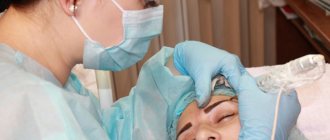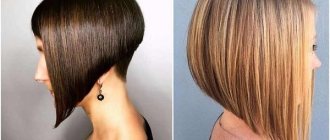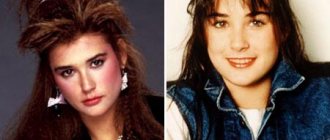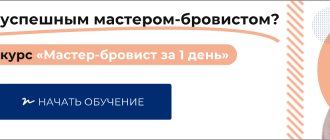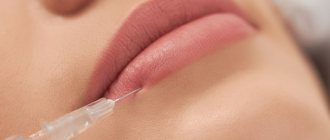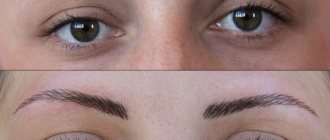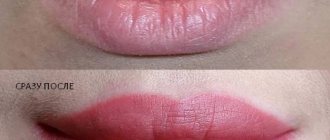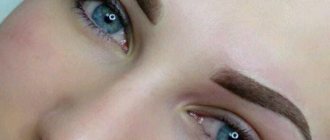The essence of the technique
Cheek plastic surgery is a process of changing the cheekbone area and cheeks in order to give this part a more aesthetic appearance. Correction is performed in several ways: through surgery (malarplasty), injections (contour plastic with fillers), and liposculpture.
Who should not receive injections in the cheekbones?
There are serious contraindications that prohibit contouring. These include:
- pathologies of internal organs;
- previously introduced silicone;
- pregnancy period;
- lactation;
- viral skin disease;
- weak immune system;
- mechanical or laser resurfacing of the face prior to plastic surgery.
In order not to cause a negative reaction, immediately after the injection it is prohibited:
- eat spicy and hot foods;
- use a thick layer of foundation;
- drink alcoholic beverages;
- go to the solarium or sauna;
- sleep with your face in the pillow;
- use facial scrubs;
- sunbathing under the open sky;
- standing up and sitting down abruptly;
- perform active physical activity;
- massage cheekbones.
A cosmetologist will tell you about a specific list of undesirable actions.
Efficiency
What effect can be achieved:
- restore facial contours;
- lifting;
- smooth out nasolabial folds;
- reduce cheeks, cheekbones;
- smooth out wrinkles;
- add volume to sunken cheeks;
- get dimples on your cheeks.
Malarplasty can change your appearance for the better, but it will not eliminate deep wrinkles. Removing Bisha's lumps will give the effect of sunken cheeks to those with a thin face. If the face is round and full, such an operation will not greatly affect its contours and the desired result will not be achieved.
Cheek plastic surgery is allowed from the age of 18. But at this age it is recommended for congenital or acquired defects on the face. If you need a lift, removal of Bisha's lumps, or plan to combat age-related changes, cosmetologists recommend doing malarplasty after 35 years, and contour plastic surgery - from 30 years. For early signs of aging, earlier correction is allowed after 25 years. But after 55 years, it is better not to resort to cheekbone surgery, as the risk of complications increases.
Attention! Age restrictions for malarplasty are not strict indicators and are advisory in nature. The decision about plastic surgery is made in each individual case.
Advantages and effect of the procedure
Hyaluronic acid injections are considered an effective non-surgical skin tightening method. It is able to qualitatively change the contours of the face, increasing the volume in the cheek area. Thus, a person’s appearance becomes more attractive.
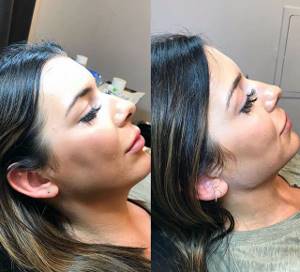
The introduction of hyaluronate has many advantages. First of all, this is a visible effect, which is clearly displayed in the “before” and “after” photographs of the procedure.
The technology also has other advantages:
- instant results;
- long lasting effect;
- without marks or scars;
- no need for anesthesia;
- painlessness;
- elimination of loose areas of skin;
- stimulation of natural collagen;
- no side effects (with proper injection and use of high-quality filler).
After the injection, hyaluronic acid gradually leaves the tissues over 8-12 months. It leaves no negative consequences.
The procedure for introducing hyaluronate into the cheekbones will not take much time. The drugs used do not cause allergies. The effect is noticeable after 40-60 minutes. Such injections are popular among both women and men.
Preparation
Since malarplasty of the cheekbones requires surgical intervention, the patient is thoroughly prepared for it in order to check the state of health, the presence of contraindications, and give several recommendations.
When visiting a plastic surgeon, the following issues are resolved:
- based on the patient’s complaints and wishes, the doctor gives recommendations on future cheekbone surgery - which technique to choose, where correction is really needed, and if surgery is not necessary, he must inform the patient about this, giving reasons for his point of view;
- the doctor finds out how psychologically the patient is ready for future changes;
- modeling of future facial contours is created using computer programs and coordinated with the patient;
- Further examination is being carried out.
What must be done:
- fluorography;
- Clinical blood and urine analysis;
- biochemical blood test;
- electrocardiogram;
- examination for infectious diseases - a conclusion is issued about the absence of HIV infection, hepatitis, sexually transmitted diseases;
- examination for blood clotting, Rh factor, group;
- coagulogram;
- visiting an anesthesiologist;
- gynecologist's report for women.
Recommendations to follow before surgery:
- 3 weeks before malarplasty, stop drinking alcohol, taking anticoagulants, oral contraceptives, and anti-inflammatory drugs;
- eating food is prohibited 6 hours before surgery;
- Half an hour before malarplasty, premedication is done - the administration of a sedative, antiallergic and narcotic painkiller in one syringe or tablets.
Causes of sunken cheeks:
- First of all, age-related changes are atrophic processes in the fat layer of the skin, loss of firmness and elasticity of the skin.
- Loss of teeth, most often after the removal of “fives”, “sixes” or “sevens”. Due to the absence of teeth, the soft tissues of the skin of the cheeks simply fall into the middle of the mouth.
- Sunken cheeks can be the result of inherited anatomical features of the facial structure. In this case, the problem of sunken cheeks may appear even at a young age.
- The cause may also be sudden weight loss through dieting or as a result of an illness.
- An unhealthy lifestyle (smoking, lack of sleep, poor environment) primarily affects the condition of facial tissues.
Kinds
To achieve the desired effect, surgical plastic surgery of the cheekbones is divided into 2 types.
Reducing
Softens facial features, making it narrower, corrects a wide jaw. To achieve this goal, different techniques are used.
Liposuction
During the procedure, fat is broken down and removed from the body. The splitting is carried out by introducing a special solution, after which the prepared fat is sucked off by vacuum. The disadvantage of this method of cheekbone correction is that it can lead to excessive sagging of the skin, so plastic surgeons recommend a more effective procedure - laser liposuction. In this case, fat deposits on the cheekbones are removed using a laser, and then with its help, subcutaneous cells are burned, provoking collagen synthesis and cellular renewal.
Thanks to laser treatment, the face becomes thinner and the skin tightens. Rehabilitation includes a two-week home regimen. It is not recommended to lose or gain weight sharply at this time.
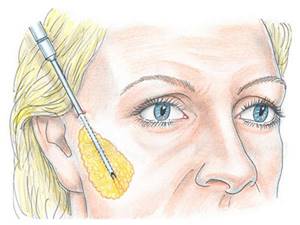
Important! The operation requires high professionalism of the doctor, since you need to know exactly where the trigeminal and facial nerves are located. Incorrect directions of the laser beam can damage them.
Malyarplasty
The goal is to reduce the cheekbone. It is carried out by partially cutting down the bone tissue by grinding or by shifting the desired part of the cheekbone inward using reposition or osteotomy. The operation is classified as severe, occurs under general anesthesia, lasts several hours and is followed by a long rehabilitation period - up to 6 months.
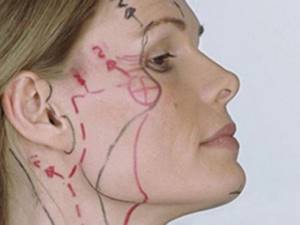
Removing Bisha's lumps
This plastic surgery of the cheekbones is carried out with the aim of reducing the lower third of the face by removing special fatty formations from the cheek area - Bisha's lumps. The operation is allowed after the age of 25, since it is believed that before this time the shape of the cheekbones can change naturally and this type of plastic surgery will not be required. In addition, surgeons warn that after a few years, cheeks without lumps that fill the shape of the frame may simply “fail” and the effect of a haggard, aged face will be obtained.
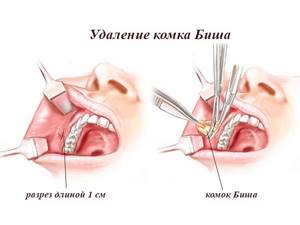
Check-lifting (cheek lift)
This is done in two ways:
- superficial - during the operation, a thin layer of fatty tissue is corrected and the skin is tightened;
- deep - the muscle frame SMAS (superficial muscular aponeurotic system) is worked out. The results of this procedure are longer lasting, but if the doctor is inexperienced, there is a risk of damage to the facial nerve.
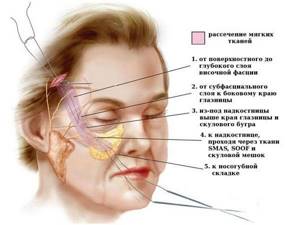
Dimpleectomy
This type of plastic surgery is used by those who want to get dimples on their cheeks. The operation is performed under local anesthesia. An incision is made through the mucous membrane on the inside of the cheek in the area where the natural cavity of the zygomatic muscle forms. The dimple itself is formed by a surgical thread, which is used to tighten the soft tissue in the area designated for the dimple. At first, such a dimple is visible even in a relaxed state, but after 1–2 months the muscles are completely restored and the dimple becomes noticeable only when smiling. Before a dimpleectomy, the surgeon warns the patient that the operation process is irreversible and it will not be possible to get rid of the dimples in the future.
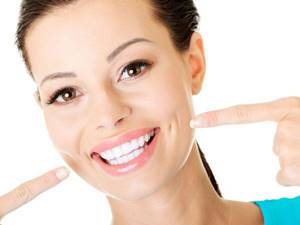
Magnifying
This kind of cheekbone plastic surgery is used for the purpose of facelift, correction of the upper part of the face in places where depressions form, etc. There are several types.
Implantation
A type of malarplasty that involves the introduction of implants into the corrected part of the cheekbones in order to give them the desired shape. The implants themselves are made from materials biologically compatible with human tissue (silicone, bone tissue) and are installed for a long time. Cheekbone augmentation surgery is performed under local or general anesthesia. All interventions are carried out in two ways:
- through the mouth - an incision is made through which the implant is installed, so signs of plastic surgery will not be visible from the outside;
- the incision is made from the outside in the temple area, behind the ear, and in this case the seam will be covered with hair.
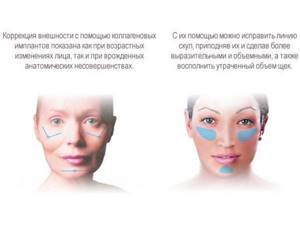
Lipofilling (liposculpture)
It includes two operations: liposuction and lipofilling. During liposuction, material is taken from the patient's own fat tissue. The resulting fat is processed and injected under the skin of the face using cannulas. The advantages of the technique are that such fillers restore the shape of the cheekbones and improve complexion. The disadvantages include the possibility of inflammatory reactions, the formation of benign cysts, and partial resorption.
After the operation, the patient needs to stay in the hospital for 1–2 days. Swelling goes away within 7–10 days. The final result is noticeable after 3 months. At this time, you can see how well the fat has been established, what part of it has resolved, etc. If necessary, additional correction of the cheekbones is done.
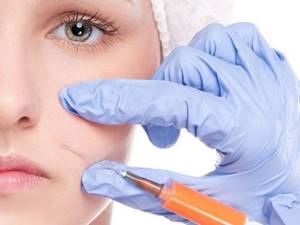
What do patients say?
Of all the types of facial correction, only lip augmentation is more popular than cheekbone augmentation. A lot of even very young women use the service of cheekbone correction to correct facial imperfections. Here you can find out their opinion on this topic.
Valeria, 26 years old
“I have known for a very long time what contouring is; I enlarged my lips with hyaluronic acid. And then I lost 20 kilograms, after which I discovered serious creases in the nasolabial folds, my cheeks sagged. And this at just 25 years old! The cosmetologist to whom I turned to fill out the nasolabial lips explained that the source of all the troubles is not them, but the fat reserves in the cheeks that have been depleted as a result of weight loss and the skin that has sagged because of this. The already elongated face began to look like a “sad” rectangle. The doctor injected fillers into my cheekbones, five injections per cheek. The procedure took a quarter of an hour, but there was a lot of pain. The doctor then massaged his cheeks. In addition, small bruises appeared on my face, because of which I did not go outside for a week. At first the effect was not visible at all. However, two weeks passed - and the face seemed to have changed! The bags under the eyes and wrinkles disappeared, the oval became clearer, the cheekbones gained expressiveness and relief. And now a year has passed since the procedure, and there are still no complaints! The gel will dissolve - I will definitely repeat the procedure.”
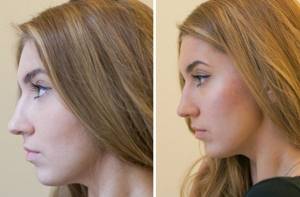
Many speak positively about cheekbone correction with fillers
Svetlana, 45 years old
“I underwent a lipofilling procedure for the face, especially the cheeks. They were sunken, which made the whole face look somehow painful. Lipofilling is a good technique: it uses the patient’s own fat, no artificial additives. True, I am asthenic, and I don’t have enough of this “material,” but they did find it on my hips.
Anesthesia almost completely eliminated pain, and I was also lucky with the doctor’s skills. At the end of the procedure, the skin was swollen for a week, but there were no bruises or bumps. The swelling went away smoothly, leaving behind freshness, elasticity, and youth. This is an amazing result. Before the procedure, it is best to choose a truly good professional to ensure you get beauty and health.”
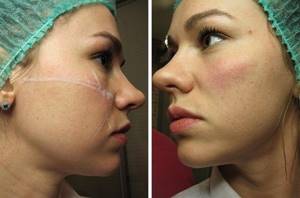
The girls are extremely happy
Anna, 48 years old
“A few months ago I used mesothreads to correct the shape of my face and cheekbones. Thanks to the high-quality anesthesia, I did not feel any pain. The swelling was not serious, there were no hematomas. And the next day I went to work. At first there was slight discomfort due to the cheekbones and corners of the lips being too raised. At first, you feel that your face is a little tense, your facial expressions are not as flexible as before. However, this passed already after thirty days. However, the visual effect is impressive: the face has become young, healthy, fresh.”
How is the operation performed?
Malarplasty is performed under anesthesia:
- local - when anesthetics are injected into the site of future treatment, the patient additionally takes sedatives;
- general - accompanied by tracheal intubation. Anesthesia is administered intravenously, the patient can be connected to an oxygen supply apparatus, as well as to a monitor where the anesthesiologist monitors his condition - pressure, pulse, respiratory rate, blood oxygen saturation.
General anesthesia enhances the effect of antiseptics. The decision about what type of anesthesia to use is made by the anesthesiologist in preparation for the operation.
Types of cuts
Depending on the type of cheekbone plastic surgery, the incisions can be:
- internal - done in the mouth, in the area of the alveolar process of the upper jaw;
- external - located from the temple behind the ear, on the side where the seam is covered by hair.
Stages of the procedure
During surgery, the procedure is as follows:
- Anesthesia. Here we wait until it begins to act.
- Disinfection. The area where malarplasty will be performed is treated with an antiseptic. If incisions are made on the mucous membrane, dilators are placed in the mouth.
- Incisions are made and the cheekbones are corrected - Bisha's lumps are removed, implants are inserted, part of the tissue is excised, or a lift is done to give the desired shape. During the procedure, the first stitches may be placed.
- After this, the incision is completely sutured with surgical threads and re-treated with antiseptics.
- If it is necessary for the tissues to grow together between the resulting voids, a tight bandage is applied in this place.
The duration of the operation depends on the type, course and anesthesia used. On average, its duration is half an hour or more. The time increases if the malarplasty is complex, requires changing the shape of the bones, etc.
Attention! Any type of cheekbone plastic surgery is fraught with serious complications if performed incorrectly. Therefore, you need to resort to correction only in a proven clinic with a good reputation and choose a doctor with extensive experience and high qualifications.
Procedure
First of all, it is recommended to make an appointment with a cosmetologist, who will determine the severity of the problem. If the prolapse/ptosis is mild, fillers with hyaluronic acid or, alternatively, Radiesse will suffice.
Interesting ! If the problem is larger, it is better to use a complex of mesothreads and implants.

Depending on the problem, a suitable remedy is selected individually
How to correct cheekbones using hyaluronate?
This technique is the least dangerous way to correct cheekbones. It can be used from 20 years of age. Once in the skin, hyaluronic acid causes it to better produce elastin and collagen.
Hyaluronate is used here. It is administered with needles or a cannula. And usually it is a cannula with a rounded tip, so as not to damage the nerves and capillaries. To enlarge both cheekbones, only 1 ml of filler is required.
Interesting ! The only bad thing is that the result does not last long - only a year and a half. After this period, no trace of filler remains in the body.
How the procedure goes:
- the cosmetologist removes the remnants of cosmetics, marks the necessary areas with a marker, while avoiding areas of fat accumulation;
- applies anesthetic cream;
- waits for its action to begin (20 minutes);

You have to wait for the anesthetic to work - injects acid around the perimeter of the oval marked with a marker, inserting a needle deep into it to fill the cheekbone area;
- Forms rolls using fingers. Performs a massage so that the filler is distributed correctly;
- treats the skin with an antiseptic, and then releases the patient.
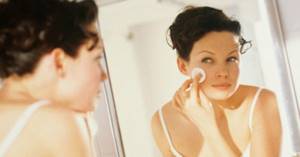
The main thing is to treat everything with an antiseptic at the end
A side effect is minor swelling, but after three days it subsides. And you can speed up the process with the help of antiseptics or anti-allergenic agents.
Attention ! Many patients do not notice any improvement after a few days, which prompts them to complain to doctors about this. But what they don’t know is that they just need to wait a little longer, allowing the hyaluronic acid to attract water molecules. The best results become noticeable two weeks after the procedure.
Use of implants
This technique is quite traumatic for the patient. The point is the need to cut the skin to insert implants. And a scar appears on the cut place. Typically, this procedure is carried out at least in the fifth decade: at this age, you already get tired of constantly injecting fillers.
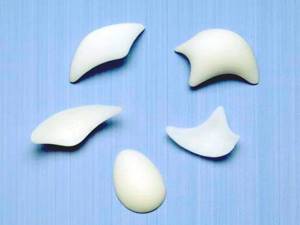
Installing implants is a rather traumatic procedure.
In cases where it is only necessary to enlarge the cheekbones, the doctor makes an incision in the upper jaw.
Interesting ! But when combining this procedure with blepharoplasty, the area of the lower eyelid is cut.
The procedure is carried out as follows:
- the doctor takes photographs and x-rays to select exactly the size and shape of the implants that are required in this particular case;
- implants are manufactured. The material used is silicone or, alternatively, foamed polyethylene;
- immediately before surgery, a general anesthetic is used;
- the doctor opens the area under the cheekbone or, if he is doing a circular lift along the hairline, under the temples;
- Implants soaked for several days in an antiseptic solution are inserted through an incision;
- stitches are placed. In this case, self-absorbable material is used;
- After waiting for the patient to wake up, the doctor processes the sutures several times.
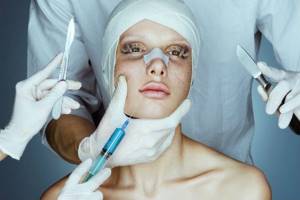
The process of installing implants is quite complicated.
The low risk of injury from the operation allows the doctor to quickly release the patient from the clinic. The stitches may remain swollen for some time and swell a little. At home they should be treated with antiseptics.
At first, discomfort in the form of sensations of a foreign body cannot be ruled out. But just a few weeks are enough for the implant to stop causing discomfort and for the face to begin to look natural.
Interesting ! There is no need to correct the result.
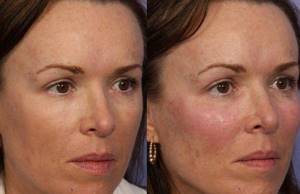
At first you will feel a lot of discomfort
Lipofilling
The technique is minimally invasive. During this procedure, the patient's fat is injected into the cheekbone area. All this is done in several stages.
The procedure looks like this:
- a drug for local anesthesia is injected into the stomach or thighs;
- a longitudinal incision is made in the desired area, a little fat is removed, and a suture is applied;
- the fat is cleaned of blood and anesthetic using special equipment to obtain pure material;
- the anesthetic is injected into the cheekbones;
- Fat is injected under the treated area using a thin cannula;
- The doctor treats the punctured areas with an antiseptic.
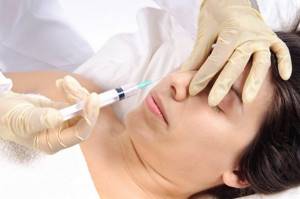
The procedure is not too complicated, but effective
The main disadvantage here is the reabsorption of adipose tissue. This means that about a third of the injected fat will be absorbed within 90 days. So the doctor injects it “with a reserve” during the procedure.
Interesting ! Also, fat often forms lumps, which spoils the appearance.
Fillers
This method involves the use of special substances to fill the cheekbones. Hyaluronic acid and calcium hydroxyapatite are used here. The latter remedy is more common than the others, since it takes root well and is poorly reabsorbed. Its other advantages are long resorption and the absence of the ability to form lumps. Calcium hydroxyapatite is obtained from seaweed and corals.
Interesting ! Due to the fact that this substance is also in the bones, it is not rejected by the body.

The use of fillers is quite popular today.
Procedure:
- examination of the face by a doctor, removal of makeup;
- dividing the cheeks into zones, drawing ovals for injecting filler;
- using a local anesthetic and waiting for its action to begin;
- injection of filler using a round cannula along the markings;
- massage to ensure that the gel is distributed evenly;
- treatment with an antiseptic, after which the patient can go home.

Calcium hydroxyapatite is not rejected by the body
Usually people tolerate the procedure well. Edema and swelling are very rare. The use of a cannula completely eliminates the occurrence of bruises: its rounded end does not tear tissues and blood vessels, but pushes them apart.
Interesting ! A filler based on calcium hydroxyapatite stays in the body for a couple of years.
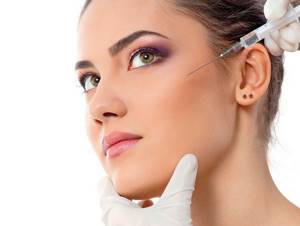
The effect of fillers lasts quite a long time
Photos before and after
Radiesse - filler and collagen stimulator
Radiesse™ can be used effectively to correct deep wrinkles, lift and contour. Radiesse™: collagen stimulator
Moreover, high-quality Radiesse™ components stimulate the synthesis of your own natural collagen. Thanks to Radiesse™'s ability to boost collagen production, skin regains its youth, firmness and elasticity - our natural beauty blooms again.
Initially, Radiesse filler was produced by the American company BioFarm Medical, which in 2010 became part of the large pharmaceutical concern Merz GmbH. & Co.
The basis of this drug is calcium hydroxyapatite 30% and 70% gel carrier in the form of hydroxyethylcellulose.
The drug in its pure form has a white color, good elasticity and viscosity.
It was developed for general and maxillofacial surgery and dentistry. Calcium hydroxyapatite is part of the bone structures of the body, therefore it does not cause allergic and immune reactions after artificial introduction into tissues. Radiesse is FDA approved, meets EU quality standards and is certified in Russia.
The following procedures are successfully performed with Radiesse:
- Accentuating the angles of the lower jaw
- General alignment of the lower jaw lines
- Enlargement of cheekbones
- Chin shape correction
- Comprehensive restoration of facial contours
- Procedures aimed at improving skin quality - vector lifting and bioreinforcement.
Properties and differences between Radiesse and hyaluronic acid fillers
- Radiesse filler, unlike fillers based on hyaluronic acid, provides a very long-term effect - from 12 months or longer.
- After administration, the drug will not attract water (due to the absence of hyaluronic acid), it will not swell, it will not cause swelling, and like a ruler, it will draw those clear shapes that were initially specified by the doctor.
- The carrier gel decomposes after 2-3 months, and calcium hydroxyapatite particles remain at the injection site for 12-20 months, creating favorable conditions for collagen growth.
- Cosmetologists love this filler for its geometry and plasticity.
- In cosmetology, both pure Radiesse
and the drug diluted 1 to 1
Radiesse dilution
and the drug diluted more than 1 to 1 -
Radiesse hyper dilution
.
The main big advantage of the drug based on calcium hydroxyapatite is the stimulation of neocollagenesis . Radiesse in dilution is an excellent stimulant and it is not at all necessary that the patient must be of age: after 30-35 years, everyone experiences a loss of elasticity - elastosis.
There are flabby patients at both 30 and 35 years old; it is for them that the Radiesse procedure using the vector lifting technique is offered.
The combined effect of Radiesse on facial skin provides a harmonious, lasting and prolonged effect with delayed “bonuses” in the form of strong, healthy and smooth skin.
Scope of application of Radiesse in cosmetology
Radiesse is used in cosmetology both for volumizing facial contouring and for improving skin quality . With its help, it is possible to achieve pronounced rejuvenation of the skin and soft tissues.
Indications for Radiesse injections for contouring
For contour plastic surgery ( rejuvenation or beautification of the patient ), Radiesse is injected into the deep layers, mainly periosteally.
Indications for procedures with Radiesse filler are the following aesthetic problems:
- Gravitational ptosis of I-III degree with tissue prolapse;
- “Sorrow” or “marionette” folds in the nasolabial triangle;
- “Floating” oval of the face;
- Deficiency of soft tissue volume in the cheekbones, cheeks or chin;
- Hump on the nose (3-5 mm in height);
- Irregularities at the tip of the nose (slight bifurcation of cartilage, dips and pits on the back);
- Atrophic scars (“potholes”);
- Asymmetry of the face and its individual parts.
The drug can be administered either in pure form or in a 1 to 1 dilution.
In facial rejuvenation, filler is used for persons prone to swelling, older patients and patients. During one visit to a cosmetologist, up to 15 ml of the drug can be safely administered. Typical correction volumes are 4-6 ml.
Radiesse filler is also suitable for treating the back of the hands. It helps eliminate “senile” networks of wrinkles and fill depleted areas with volume.
Lip augmentation with Radiesse is not recommended , nor is injection of the drug into the orbital area ( around the eyes ).
Contour plastic surgery with Radiesse filler is well tolerated by patients and does not entail significant restrictions during the rehabilitation period.
Indications for Radiesse injections for skin rejuvenation
To stimulate collagenogenesis, the drug is administered using the bioreinforcement or vector lifting technique shallowly under the skin.
With these linear-retrograde movements, the drug is injected to stimulate collagenesis. It is important to inject the drug to the desired depth to prevent it from translucent.
Primary skin hyperemia, which is the body’s normal response to an external stimulus, disappears in a short time - 1-2 days. However, the full effect of skin rejuvenation must be expected after 2 - 4 months, provided that the procedure for introducing Radiesse in dilution is repeated every 4-5 weeks.
“Radiesse is dangerous and should not be used” - the whole truth about this drug is in our separate article.
Only those doctors who have undergone appropriate training have the right to use Radiesse!
Rehabilitation period
Immediately after cheekbone surgery, a rehabilitation period begins. At this time, the face swells, the patient feels a burning sensation, skin tightness due to swelling, pain, and discomfort. The hardest days are the first three days. The rehabilitation period can last up to six months. It all depends on the complexity of the operation. The hardest thing to recover from is surgery on bone tissue.
Peculiarities:
- at first you need to stay in a hospital, after discharge - under the supervision of loved ones;
- after malarplasty, a course of antibiotics is prescribed for 3–5 days;
- During the first 3–4 days, severe pain persists, so taking painkillers is allowed;
- sutures in the mouth heal quickly - within 3-4 days, but swelling persists longer - from two weeks to 3 months;
- during intraoral intervention, you should rinse your mouth with an antiseptic solution several times a day for 4–5 weeks;
- external sutures are processed according to the surgeon’s recommendations;
- to speed up the process of disappearance of edema, decongestant and anti-inflammatory drugs can be prescribed, most often Traumeel S;
- until the swelling disappears, it is recommended to sleep on a high pillow, avoiding a face-down position;
- Hardware procedures—microcurrents—can also be prescribed to speed up healing.
On average, the result after cheek surgery lasts about 10 years. Correction of cheekbones, removal of Bisha's lumps, dimplectomy remain unchanged throughout life. Scars do not completely dissolve, but they are almost invisible and do not cause any discomfort.
Pros of the procedure
This procedure has many advantages. It is much safer than surgery. After the procedure, you will not have any traces left. There will be no need to cut the skin, and there will be no scars left after the injection of fillers. After the procedure there is a very short recovery period. You will only need to wait a few days after the injection marks disappear from your skin, and you will be able to live as you lived before. You will not need to stay in the hospital during the rehabilitation period, and you will not have to perform certain actions. You will just need to follow some guidelines and avoid visiting certain places during certain periods.
| Sign up for a free consultation by phone: +7 (495) 430-01-77 When you sign up online, you receive not only a discount on the service, but also an individual consultation with a leading specialist for free! | Sign up online 5% discount |
Where is it made and cost?
Malarplasty and contour plastic surgery of the cheekbones are done in special clinics with permission to carry out such interventions. It is better to consult a doctor with experience, who is well versed in the nuances of the procedure, knows the structure of the face, the location of nerves and blood vessels. The cost of surgical plastic surgery of the cheekbones depends on the complexity of the intervention. The starting price is about 65,000 rubles. Bish's lumps can be removed at a cost of about 35,000 rubles. The price for a dimpleectomy is approximately the same.
Indications for cheekbone contouring
Contour plastic surgery is indicated for people with age-related problems. The main reasons that force the procedure also include:
- weakly defined cheekbones;
- scars on the face;
- wrinkles on the cheeks;
- cheekbone deformation;
- ugly oval face.
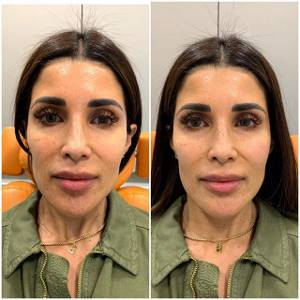
After injections you can expect the following effect:
- external beauty of cheekbones;
- changing the oval of the face;
- skin elasticity;
- elimination of wrinkles;
- disappearance of sagging;
- filling voids.
The “before” and “after” photos clearly show that the face acquires smoothness and attractive roundness.
Restrictions after surgery
To avoid complications you should:
- at first, eat liquid and viscous foods - cereals, jelly, soups, etc., avoiding solid foods;
- after surgery, you should not eat hot, spicy or sour foods through the mucous membrane until the incisions are completely healed;
- For the first month, it is advisable to give up smoking and drinking alcohol - bad habits slow down the healing process;
- For the same period, visiting solariums, baths, playing sports, and excessive facial expressions are prohibited.
Healing period
After the procedure, your face may be red and swollen. This is explained by the influx of intercellular fluid to injured tissues. Cheekbones appear larger than they really are.
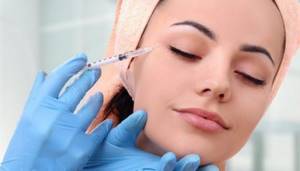
The outcome can be adequately assessed only after a couple of days, when the swelling subsides.
The first day, hematomas, burning and mild pain are also considered normal. These symptoms do not require treatment and go away on their own within a week.
To properly distribute the filler and reduce the recovery period, you need to ensure that a number of conditions are met:
- do not use decorative cosmetics;
- do not visit the bathhouse, sauna, solarium;
- do not massage, do not sunbathe;
- do not play sports;
- give up sports training;
- do not drink alcohol;
- do not undergo cosmetic procedures;
- sleep on your back, avoiding positions on your side and stomach.
You need to follow the listed rules for the first week after contouring. This will avoid filler displacement and protect against other negative consequences.
What complications can there be?
Depends on the type of correction.
Side effects after surgical cheekbone surgery are divided into 2 types:
- are common;
- specific.
General complications
Appear during any surgical intervention. These include:
- swelling;
- nausea;
- pain;
- bruises;
- numbness;
- scars at the site of sutures;
- dizziness;
- bleeding;
- allergy;
- inflammation.
Specific
They appear after malarplasty due to violations of the rules of the rehabilitation period, characteristics of the body, or due to the inexperience of the doctor.
It can be:
- infectious phenomena;
- implant rejection;
- facial asymmetry;
- pigmentation;
- chronic sinusitis;
- displacement of the zygomatic bones;
- paralysis of part of the face if the facial nerve is affected;
- incomplete functioning of the jaw area;
- tissue necrosis;
- sagging skin.
Complications can occur throughout the rehabilitation period, so until its completion it is important to be under constant supervision of the surgeon.
When is revision surgery required?
Repeated (revision) malarplasty is indicated if the following phenomena are observed after surgery:
- asymmetry;
- there were no changes due to cheekbone surgery;
- sagging skin;
- implant migration, its instability;
- additional correction is needed.
Comparison with other methods of cheekbone correction
The use of fillers allows you to achieve a natural lift of the cheekbones, with minimal risks of side effects. There are no age restrictions; the procedure not only corrects the oval line, but also refreshes and rejuvenates the skin.
Micro-punctures can reduce recovery to a few days. The effect lasts for about a year, after which repeated administration of the drugs is required.
Fat grafting – the patient’s own fat, taken from the thighs, buttocks or abdomen, is used as a filler. Has an increasing effect over 3 months. The procedure is quite expensive, but the results last for about 3 years. Allergic reactions and side effects are possible.
Plastic surgery has age restrictions and is performed under general anesthesia. Requires a preparatory stage, the healing period lasts at least a month. The results last a lifetime.
Contraindications
Plastic surgery cannot be performed if the patient:
- infectious diseases of various origins;
- exacerbation of chronic diseases;
- allergic manifestations;
- disruption of the cardiovascular, nervous, endocrine and respiratory systems, including diabetes and hypertension;
- oncological diseases;
- metabolic disorder;
- blood diseases and clotting problems;
- skin irritation, rash at the correction site;
- pregnancy, lactation.
How to prepare for the procedure
In general, no special preparation is needed for the procedure. Only a few recommendations should be followed. First, see your doctor. It is possible that you may have contraindications to the procedure. It is advisable to pass the entire list of necessary tests in order to get a high-quality result and avoid side effects. Perhaps you cannot have injections; this technique will not suit you. You will be offered other ways to solve your aesthetic problem.
If you have contraindications that are temporary, then you can simply wait a little and do the procedure a little later. It is advisable the day before the procedure not to drink alcohol, not to undergo physical activity, not to take pills or other drugs that can reduce or increase blood clotting.
Alternative Methods
Other techniques are also used to correct cheekbones.
Contour plastic surgery - use of fillers
During the procedure, gel-like fillers are injected into the areas where volume needs to be added. Most often, fillers based on hyaluronic acid and calcium hydroxyapatite are used for this.
The procedure does not last long - from 15 minutes to an hour. The duration depends on the location of the problem area, as well as whether anesthesia was used during the session or not. Advantages of cheekbone contouring:
- speed of the procedure;
- short and easy rehabilitation period;
- Over time, fillers dissolve;
- it is possible to neutralize hyaluronic acid in case of side effects.
The disadvantages of the method include the fact that the result lasts from 6 months to 3 years, then cheekbone plastic surgery with fillers is carried out again to maintain the effect.
Hardware therapy
It involves the effect of special radiation on the skin of the face:
- laser - the beam penetrates the subcutaneous tissues, injures them and stimulates the production of collagen, as a result of which the skin is rejuvenated, the contours of the cheekbones become more defined;
- radio frequency (RF-lifting) - during the procedure, the subcutaneous tissues are heated, as a result of which the collagen fibers contract and the facial muscles are tightened.
Cryolifting is also used - exposure of the dermis to extra-low temperatures (-20 degrees Celsius). This technique stimulates collagen production, strengthens blood vessels, relieves swelling, and removes toxins.
To achieve results, hardware cosmetology must be carried out in a course of at least 3 procedures. It is worth noting that such techniques can only rejuvenate and tighten the skin; dramatic changes in appearance do not occur after them.
Mesothreads
Thanks to this correction of the cheekbones, the facial frame is formed by introducing special cosmetic threads. Mesothreads are inserted using long needles with a blunt tip - a cannula. The effect lasts up to 2 years.
Plasmolifting
During the procedure, the patient's processed plasma is injected under the skin. The technique has a rejuvenating effect, improves metabolic processes, smoothes wrinkles, and promotes cell regeneration.
Gymnastics (face building)
An effective technique for strengthening facial muscles, shaping the contour, and preventing aging. To achieve results, you need to do special regular exercises for a long time.
What is called cheekbone contouring?
Contour plastic surgery of the cheekbones is commonly called volumetric modeling of the face. This procedure is carried out with special fillers that are injected into the skin. These drugs have a gel structure. Once they are injected into the skin, the areas that need to be enhanced will be filled. As a result of the procedure, the patient gains relief in the places where it is needed. In most cases, fillers based on hyaluronic acid are used for this procedure. Hyaluronic acid is present in our body. As a result, the skin will become more elastic, the water balance will be maintained. Therefore, these fillers are used not only for cheekbone contouring procedures, but also to rejuvenate the face and make the skin more beautiful. If you undergo a contouring procedure, then as a bonus you will receive improved skin at the injection sites.
Experts' opinion
The expert in this review says that there are no age restrictions for plastic surgery of the cheekbones. But he emphasizes that after 70 years of age this type of surgical intervention is not recommended.

The popular operation to remove Bisha's lumps is not always indicated. The surgeon speaks about this when answering a question from a patient who wants to remove sagging cheeks.

The doctor from this review also warns about possible consequences after removing the lumps. The surgeon says that they support the muscles, and if before the age of 35 the operation gives the effect of a refined face, then after this age the muscle tissue relaxes, and the face looks haggard and tired. And then contour plastic surgery is needed - correction of the cheekbones with fillers. He also talks about lipofilling, warning that the injected fat can have side effects - inflammation and seroma.
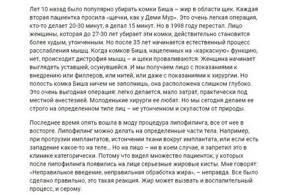
Advantages and disadvantages
| pros | Minuses |
|
|
Patient reviews
The girl in this review talks about her well-being and the condition of her face a month after malarplasty. He says that there is some swelling left and sensitivity has not fully returned.
Detailed details of the girl’s rehabilitation period are here https://plastic-surgeon.ru/forum/showthread.php?t=14371
The patient shares her experience of removing Bisha's lumps in the following review. He says that even after 2 months he does not see the final result, as swelling is noticeable. According to the surgeon, the effect will only appear in 4–6 months.
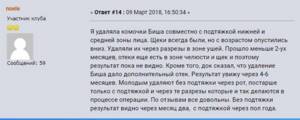
The following patient talks about the sensations during the operation to remove Bisha’s lumps. He notes that the pain was tolerable, but it intensified slightly at the time of removal of fat pieces. The girl also says that the lumps themselves are also removed in different ways: on the one hand, it came out easily, but on the other hand, the surgeon had to tinker with it to remove it. Attached is a photo of the lumps themselves.
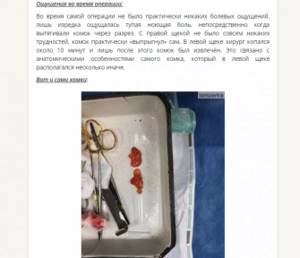
Details here https://irecommend.ru/content/foto-ne-dlya-slabonervnykh-o-tom-kak-prokhodit-plasticheskaya-operatsiya-i-posleoperatsionny
The patient in the following review felt well after the operation. She says that she immediately saw how her cheeks became smaller. But then severe pain appeared and I had to take painkillers. The next day there was severe swelling and the doctor prescribed Traumeel - ointment and tablets at the same time.
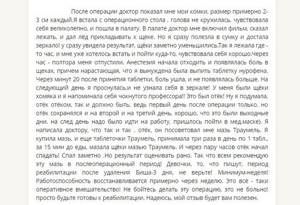
The patient was dissatisfied with the outcome of the operation to remove Bisha's lumps, she waited 2 months for the result and did not receive it. He believes that there is no effect from the operation.

Cheek surgery is a serious intervention that can change your appearance for the better. But in order for the result to turn out as desired, and after the operation not to become a victim of serious complications, you need to put your face in the hands of a highly qualified doctor who values his reputation, strives to do his job perfectly and is able to direct the patient’s desires in the right direction. After all, a person’s opinion about his appearance is not always correct, and an experienced surgeon will be able to point this out and offer an option that will be for the benefit of the client himself.
Patient reviews
Opinions about correcting cheekbones are quite controversial. The procedure has both advantages and disadvantages. The second category includes:
- presence of contraindications;
- high price of the course;
- an impressive list of restrictions after injection.
Negative reviews usually come from people who used cheap, questionable fillers and performed the procedure at home. A properly selected drug is not felt under the skin and does not cause discomfort.
Technique

Anyone who wants to improve their face shape using the method described above must go through several mandatory steps:
- Consultation with a specialist, during which the characteristics of the skin are determined. And, based on the data obtained, a filler suitable for this particular person is found. In addition, possible reasons are identified why this manipulation may become impossible.
- Marking of corrected places. If no contraindications are found, special markings are drawn on the patient’s cheeks using a marker.
- The areas to be corrected are cleaned and a numbing spray or cream is applied.
- An injection syringe is inserted into pre-marked areas, and the required amount of filler gel is injected under the dermis.
It is worth explaining that there are two ways to administer this drug - bolus, in which the entire required dose is administered at once.The second method is called linear-retrograde, first the needle enters completely, and when it comes out, small parts of the whole dose are injected;
The last, final stage is treatment with antibacterial agents.
Watch the video to see how cheekbones are modeled with fillers.
Indications
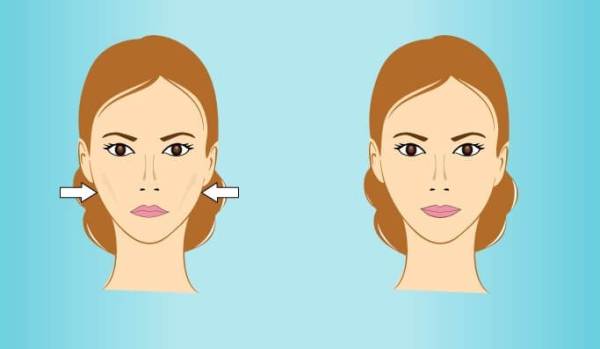
Asymmetry of the facial part or sagging tissue can be the result of:
- birth defect;
- aging and thinning of the skin;
- carrying out an operation after which the shape of the cheekbones changed;
- sudden weight loss;
- the formation of unsightly sagging folds and furrows;
- sagging cheeks and the formation of depressions on them.
All this is a direct indication for the use of fillers.
What is fractional mesotherapy for facial skin, its effectiveness and contraindications. Find out the current prices for nose correction with fillers here.
At this address, watch a video of nasal septum septoplasty.
